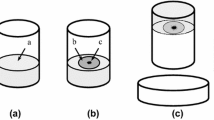Abstract
Damage caused by the black bean aphid, Aphis fabae Scopoli, on the common bean, Phaseolus vulgaris L., was severest when the aphids were transferred onto bean plants during the preftowering stage. There were significant reductions in the average length of the central shoot, production of flowers, pods and seeds per plant. Seed weight per plant was also significantly reduced when aphid infestation occurred during the preflowering stage. Smaller, but significant reductions to the length of the central shoot, quantity of pods and weight of seeds produced per plant caused by A. fabae were also recorded when the aphids were transferred onto plants at anthesis. When aphid infestation occurred during the grain filling stage the damage caused was minimal and insignificant. The results obtained indicated that the preflowering stage was the vulnerable stage of bean development during which aphid attack is most harmful and, if unchecked, could lead to drastic yield losses.
Résumé
Les dommages causés par l’aphid du haricot noir Aphis fabae Scopoli au haricot ordinaire Phaseolus vulgaris L. étaint plus graves quand les aphids étaient transférés sur les plantes de haricot pendant le stade de la préfloraison. Il y avait des réductions notables sur la longueur moyenne de la pousse centrale, sur la production des fleurs, des cosses et des graines par an.
Le poids par plante était aussi considérablement réduit quand l’infestation de l’aphid a eu lieu pendant le stade de la préfloraison. De plus petites mais importantes réductions sur la longueur de la pousse centrale sur la quantité de cosses, et sur le poids de graines produites par plante, causées par A. fabae avaient ete observées quand le aphids étaient transférés sur les plantes à l’anthesis. Quand l’infectation de l’aphid a eu leiu pendant le stade de classement de graines les dégâts étaient minimes et insiginifiants. Les résultats obtenus ont montré que la période de la floraison était le étape la plus vulnerable dans le développement du haricot; pendant cette période l’attaque de l’aphid est plus nuisible et sans la surveiller, elle pouvait conduire à des pertes massives de vécoltes.
Similar content being viewed by others
References
Adams M. W. (1967) Basis of yield component compensation in crop plants with special reference to the field beans Phaseolus vulgaris L. Crop Sei. 7, 505–510.
Anonymous (1974a) Economic survey (1974), Central Bureau of Statistics, Kenya Government.
Anonymous (1974b) Grain legume development: Report of the mission evaluating the Dryland Bean Project, Faculty of Agriculture, University of Nairobi.
Barlow D. A. (1973) Effects of pea aphid Acyrthosiphon pisum (Homoptera: Aphididae) on the growth and productivity of pea plants, Pisum sativum. Can. Ent. 109, 1491–1502.
Davidson J. (1925) Biological studies of Aphis rumicis Linn: Factors affecting the infestation of Vicia faba with Aphis rumicis. Ann. appl. Biol. 52, 133–143.
Duarte R. A. and Adams M. W. (1972) A path coefficient analysis of some yield component interrelations in field beans Phaseolus vulgaris L). Crop Sei. 12, 579–582.
Eastop V. F. (1954) Notes on East African aphids: IV. Aphids of leguminous crops. E. Afr. agric. J. 19, 104.
Eastop V. F. (1957) The periodicity of aphid flight in East Africa. Bull. ent. Res. 48, 305–310.
Ibbotson A. and Kennedy J. C. (1951) Aggregation in Aphis fabae Scop. L. Aggregation on plants. Ann. appl. Biol. 38, 65–78.
Ingram W. R. (1969) A note on the failure to control aphid infestations on beans with insecticides in Uganda. E. Afr. agric. For. J. 34, 476–481.
Ishag H. M. (1973) Physiology of seed yield in field beans (Vicia faba L.). 1. Yield and yield components. J. agric. Sei. 80, 181–189.
Judenko C. G., Johnson C. G. and Taylor L. R. (1952) The effect of Aphis fabae Scop, on growth and yield of field beans in a garden plot. PL Path. 1, 60–65.
Kennedy J. S. and Booth C. O. (1950) Methods of mass rearing and investigating the host relations of Aphis fabae Scop. Ann. appl. Biol. 37, 451–470.
Kennedy J. S. and Booth C. O. (1954) Host alteration in Aphis fabae Scop. 1. Feeding preferences and fecundity in relation to age and kinds of leaves. Ann. appl. Biol. 41, 88–106.
Kulkarni H. Y. (1972) Survey of viruses affecting East African major food crops. PhD thesis, University of Nairobi.
Nyiira Z. M. (1978) Pests of grain legumes and their control in Uganda. In Insect Pests of Grain Legumes: Ecology and Control (Edited by Singh S. R., Taylor T. A. and Van Emden H. F.). Academic Press, London.
Schonherr S. and Mbugua E. S. (1976) Bean production in Kenya’s Central and Eastern Provinces. Occasional Paper No. 23, Institute of Development studies, University of Nairobi.
Sinha S. K. (1974) Yield of grain legumes: Problems and prospects. Indian J. Genet. Rl. Breed. 34, 988–994.
Sinha S. K. and Savithri K. S. (1978) Biology of yield in food legumes. In Insect Pests of Grain Legumes: Ecology and Control (Edited by Singh S. R., Taylor T. A. and Van Emden H. F.). Academic Press, London.
Way M. J., Smith P. M. and Potter C. (1954) Studies on the bean aphid Aphis fabae Scop.) and its control on field beans. Ann. appl. Biol. 41, 117–131.
Author information
Authors and Affiliations
Rights and permissions
About this article
Cite this article
Khaemba, B.M., Ogenga-Latigo, M.W. Effects of the Interaction of Two Levels of the Black Bean Aphid, Aphis fabae Scopoli (Homoptera: Aphididae), and Four Stages of Plant Growth and Development on the Performance of the Common Bean, Phaseolus vulgaris L., Under Greenhouse Conditions in Kenya. Int J Trop Insect Sci 6, 645–648 (1985). https://doi.org/10.1017/S1742758400002824
Received:
Revised:
Published:
Issue Date:
DOI: https://doi.org/10.1017/S1742758400002824




